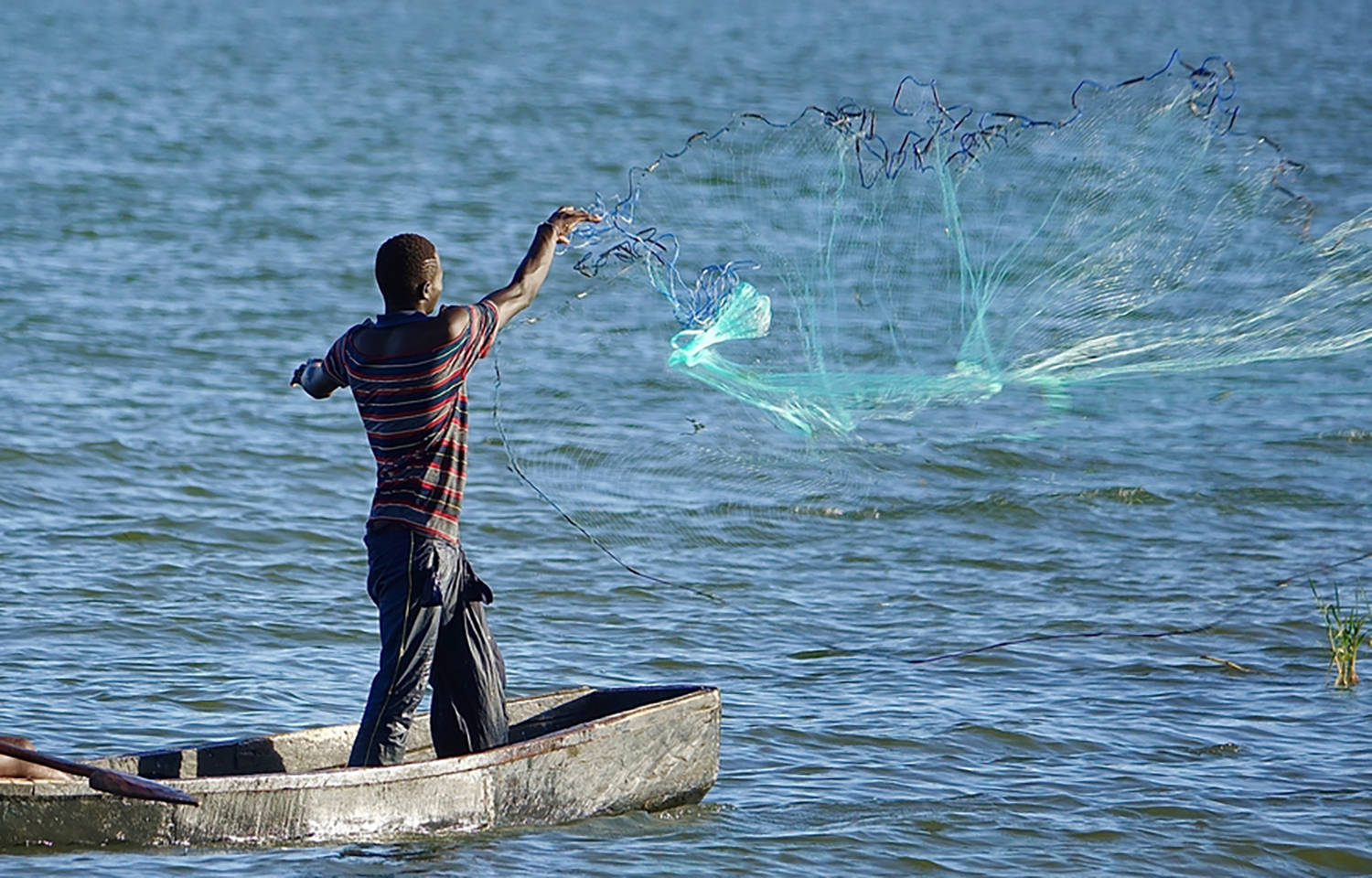Year-over-year fish production in Kenya declined in 2023 as the country’s freshwater fisheries – where most of the country’s fishery production occurs – continued to deal with environmental stressors and illegal, unreported, and unregulated (IUU) fishing activities, among other problems, a government report has found.
The report, conducted by the Kenya National Bureau of Statistics (KNBS), said fish production declined to 164,000 metric tons (MT) in the country, which was down from the 171,000 MT recorded in the previous year. Just about 75 percent of that total stemmed from freshwater fishery production.
Kenya’s share of fish production from Lake Victoria – Africa’s largest freshwater fishery that Kenya shares with Tanzania and Uganda – declined to 70,300 MT, dropping from 86,400 MT in 2022. The KNBS largely attributed the dip to increasing pollution in the lake and the prevalence of IUU fishing.
“Illegal fishing practices, such as the use of unregulated methods like fine mesh nets or seine fishing, have significantly contributed to the decline in fish catch in Lake Victoria. These practices cause severe harm to fish populations and directly contribute to reductions in overall catch,” the report said.
The report also highlighted a shift toward aquaculture on the lake as a reason why production dipped.
Kenya’s aquaculture sector, which is still in its infancy and grappling with low investment, has consistently grown since 2019, when the country's fish farmers produced 18,500 MT. That output has since risen, reaching 27,800 MT in 2022 and 31,700 MT in 2023. However, the sector also grappled with massive fish kills in 2022, as recurring episodes of low oxygen caused fish die-offs.
Though aquaculture is steadily growing, it could not replace the corresponding drops in fishery production. Ripple effects from the dip in production have included a drop in Kenya’s fish export volumes and an increase in the price for fish and fish preparations, according to the KNBS.
Average market prices for fish increased to KES 620 (USD 4.60, EUR 4.30) per kilogram in 2023, up from the KES 412 (USD 3.00, EUR 2.80) posted in the previous year.
Kenya has been investing in infrastructure in the country to boost the country's seafood export earnings. The country announced KES 10.7 billion (then USD 98 million, EUR 83 million) in financing for the fisheries sector in 2021, investing in projects at several inland and marine fishery sites. The government also launched additional data-collection schemes.
An export promotion program launched in 2022 by the Kenya TradeNet Network Agency in partnership with the Deutsche Gesellschaft für Internationale Zusammenarbeit (GIZ) through the German Alliance for Trade Facilitation (GAfTF) has also focused on boosting export numbers - but those efforts could not counter the drops in production.








